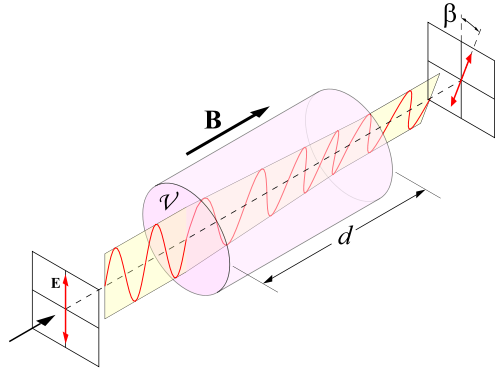The Faraday Sky
Posted: Fri Dec 09, 2011 3:45 am
http://www.universetoday.com/91670/mapping-the-milky-ways-magnetic-fields-the-faraday-sky/#more-91670 wrote:
Mapping The Milky Way’s Magnetic Fields – The Faraday Sky
by Tammy Plotner on December 9, 2011The Faraday Sky (corrected for the number density of electrons ne): Red and blue colors indicate regions of the sky where the magnetic field (B||) points toward and away from the observer, respectively. The North celestial pole is at the top left and the South Pole is at the bottom right.
OVERLAY: The Faraday Sky ( uncorrected for the number density of electrons ne): The band of the Milky Way (the plane of the galactic disk) extends horizontally in this panoramic view. The center of the Milky Way lies in the middle of the image.
<<Kudos to the scientists at the Max Planck Institut and an international team of radio astronomers for an incredibly detailed new map of our galaxy’s magnetic fields! This unique all-sky map has surpassed its predecessors and is giving us insight into the magnetic field structure of the Milky Way beyond anything so far seen. What’s so special about this one? It’s showing us a quality known as Faraday depth – a concept which works along a specific line of sight. To construct the map, data was melded from 41,000 measurements collected from a new image reconstruction technique. We can now see not only the major structure of galactic fields, but less obvious features like turbulence in galactic gas.
So, exactly what does a new map of this kind mean? All galaxies possess magnetic fields, but their source is a mystery. As of now, we can only guess they occur due to dynamo processes… where mechanical energy is transformed into magnetic energy. This type of creation is perfectly normal and happens here on Earth, the Sun, and even on a smaller scale like a hand-crank powered radio – or a Faraday flashlight! By showing us where magnetic field structures occur in the Milky Way, we can get a better understanding of galactic dynamos.
For the last century and a half, we’ve know about Faraday rotation and scientists use it to measure cosmic magnetic fields. This action happens when polarized light goes through a magnetized medium and the plane of polarization revolves. The amount of turn is dependent on the strength and direction of the magnetic field. By observation of the rotation we can further understand the properties of the intervening magnetic fields. Radio astronomers gather and examine the polarized light from distant radio sources passing through our galaxy on its way to us. The Faraday effect can then be judged by measuring the source polarization at various frequencies. However, these measurements can only tell us about the one path through the Milky Way. To see things as a whole, one needs to know how many sources are scattered over the visible sky. This is where the international group of radio astronomers played an important role. They proved data from 26 different projects which gave a grand total of 41,300 pinpoint sources – at an average of about one radio source per square degree of sky.
Although that sounds like a wealth of information, it’s still not really enough. There’s huge areas, particularly in the southern sky, where only a few measurements exist. Because of this lack of data, we have to interpolate between existing data points and that creates its own problems. First, the accuracy varies and more precise measurements should help. Also, astronomers are not sure of exactly sure of how reliable a single measurement can be – they just have to take their best guess based on what information they have. Still, other problems exist. There are measurement uncertainties due to the complex nature of the process. A small error can increase by tenfold and this could convolute the map if not corrected. To help fix these problems, scientists at MPA developed a new algorithm for image capture, named the “extended critical filter”. In its creation, the team utilizes tools provided by the new discipline known as information field theory – a powerful tool that blends logical and statistical methods to applied fields and stacks it up against inaccurate information. This new work is exciting because it can also be applied to other imaging and signal-processing venues in alternate scientific fields.
The good news is the galactic dynamo theory seems to be spot on. It has predicted symmetrical structures and the new map reflects it. In this projection, the magnetic fields are lined up parallel to the plane of the galactic disc in a spiral. This direction is opposite above and below the disc and the observed symmetries in the Faraday map arise from our location within the galactic disc. Here we see both large and small structures tied in with the turbulent, dynamic Milky Way gas structures. This new map algorithm has a great side-line, too… it characterizes the size distribution of these structures. Larger ones are more definitive than smaller ones, which is normal for turbulent systems. This spectrum can then be stacked against computer models of dynamics – allowing for intricate testing of the galactic dynamo models.
This incredible new map is more than just another pretty face in astronomy. By providing information of extragalactic magnetic fields, we’re enabling radio telescope projects such as LOFAR, eVLA, ASKAP, Meerkat and the SKA to rise to new heights. With this will come even more updates to the Faraday Sky and reveal the mystery of the origin of galactic magnetic fields.>>



